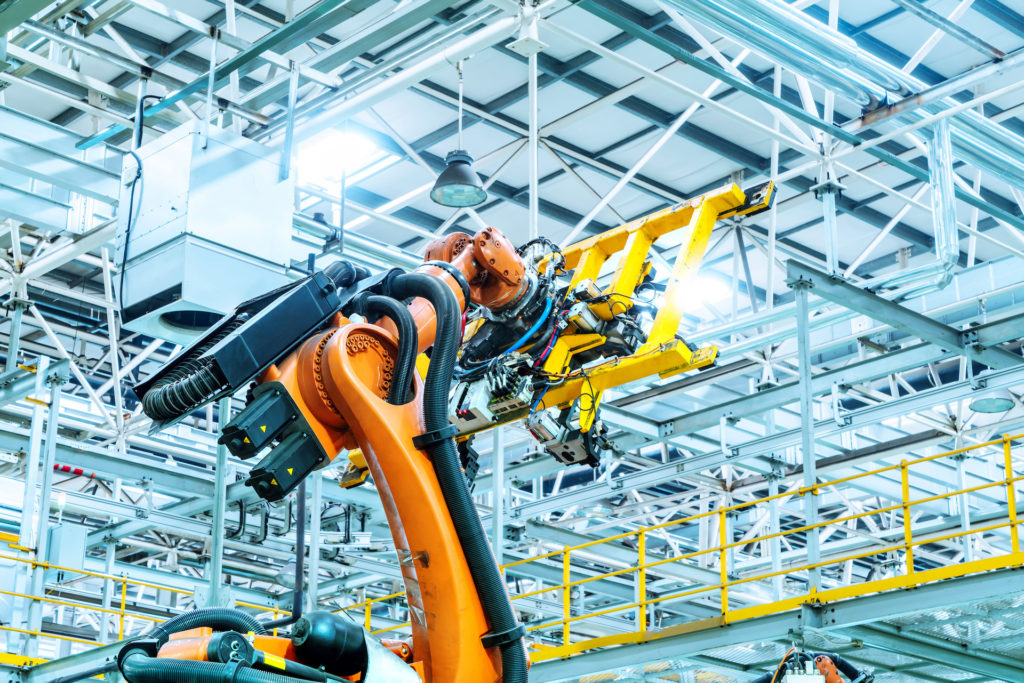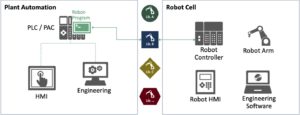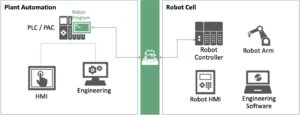Consistent and seamless digitization inevitably includes robotic applications. Even though PI initiated a simple robot profile at the very beginning of its existence, numerous proprietary interfaces have become established over the course of the last three decades. However, Industry 4.0 can only be implemented through consistent standardization.
Today, complex, stationary, and mobile robots are being installed to an ever-increasing extent in modern production lines to improve the degree of automation and reduce costs. Since these lines are usually controlled by controllers and the users create the production line workflows in the corresponding PLC programming systems, simple integration of the robot systems is an important prerequisite for efficient integration.
The numerous experiences that PI users and manufacturing companies have already gained in the past with these proprietary interfaces for integrating industrial robots into control systems through profiles merged into an initiative of leading robot and PLC manufacturers with the aim of defining a uniform interface between robots and controllers.
As a prestigious standardization organization, PI has received the trust of the companies involved to establish an open standard for such an interface between robots and controllers that is independent of the underlying communication system. It allows robot systems to be controlled from the user program of the PLC across manufacturers. An initial specification version, known as the Standard Robot Command Interface (SRCI), was made available in late 2021. Ideas for enhancements and optimizations have emerged as implementation experience has been gained by an increasing number of robot and PLC manufacturers. The second version has already passed the PI review and will soon be available as a final version.
The programming of robots as well as the provision of standardized data interfaces has been occupying the resources of several organizations such as the VDMA, PLCopen, and the OPC Foundation for quite some time. Each of the organizations covers a specific part of the spectrum. This was the reason for PI to invite leading robotics experts and PLC manufacturers to a ‘Get Together for Robotics’ at the end of 2022 to shape the future of robot programming. The vision is to drive forward cross-organizational standardization in robot programming. The Motion Control interface of PLCopen, the Companion Standards of the VDMA and OPC Foundation as well as the SRCI of PI will form the basis.
The event laid the foundation for simple, user-friendly, standardized programming of robots, which will achieve a high degree of interoperability between different manufacturers.
For users, the SRCI thus offers the possibility to write robot programs completely in the PLC. Beginners can concentrate on the PLC programming systems right from the start. Learning specific programming languages for robot systems and programming on the robot side is thus no longer absolutely necessary. In addition, the advantage for PLC and robot manufacturers is that only one library needs to be implemented to achieve interoperability between different manufacturers.




 Peter Wenzel
Peter Wenzel